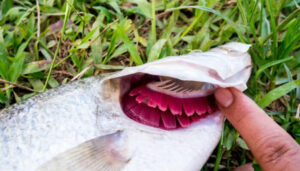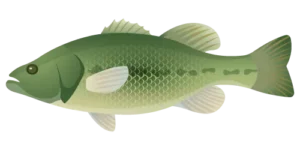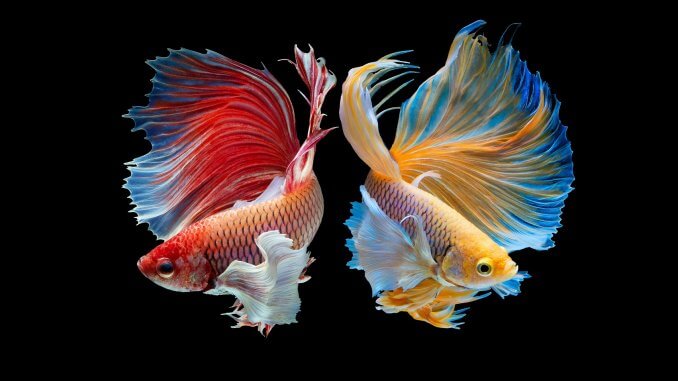Can Fish Drown? Understanding the Science Behind Fish Respiration

Can Fish Drown?
With their gills and aquatic habitat, fish are often seen as perfectly adapted to underwater life. Yet, a common question arises: Can fish drown? While it may seem paradoxical, the answer is not as simple as it appears. Fish don’t drown in the same way mammals do, but under certain conditions, they can suffocate. This article explores how fish breathe, the circumstances under which they can “drown,” and what we can do to ensure the health of aquatic ecosystems.
How Do Fish Breathe?
Before diving into whether fish can drown, it’s crucial to understand how fish breathe. Unlike mammals, fish extract oxygen fromwaterusing gills instead of lungs. The process works as follows:
Water Intake: Fish draw water into their mouths, which is passed over their gills for oxygen extraction.
Gills’ Function: Water passes over the gills, where specialized gill filaments contain tiny blood vessels. These filaments absorb dissolved oxygen from the water and expel carbon dioxide.
Oxygen Transfer: As water moves over the gills, oxygen enters the fish’s bloodstream, ensuring it can continue its metabolic functions.
Gills vs. Lungs: Why Fish Don’t Breathe Air

Fish gills are explicitly designed for water and aren’t effective at absorbing oxygen from the air. While some species, like the lungfish, have adapted to breathe air, most fish require water to survive.
Semantically related words: aquatic respiration, dissolved oxygen, gill function, oxygen exchange
Can Fish Drown?j
“drown” is typically used for mammals that can’t breathe underwater. In humans and land animals, drowning occurs when water enters the lungs, preventing oxygen intake. Since fish don’t have lungs, they can’t drown in the same sense. However, they can suffocate if they don’t receive enough oxygen.
Conditions That Can Cause Fish to Suffocate
Several factors can disrupt a fish’s ability to extract oxygen from water, leading to suffocation, or what might be colloquially referred to as “drowning”:
Lack of Dissolved Oxygen in Water:
Fish rely on dissolved oxygen (DO) in water to breathe. When DO levels drop, fish may suffocate.
Hypoxia occurs when oxygen levels in the waterfall are too low, often due to:
Overpopulation of fish in a small space
Pollution, particularly from chemicals or decaying organic matter
Algae blooms, which deplete oxygen levels at night
Source: National Oceanic and Atmospheric Administration (NOAA)
Blocked Gills:
Fish can become suffocated if their gills are blocked or damaged. This can happen in polluted environments or due to injury.
Water Quality Issues:
Toxic chemicals or pollutants in the water can impair gill function, making it hard for fish to extract oxygen. In such cases, fish may behave lethargically or swim near the surface, gasping for air.
Being Removed from Water:
When a fish is removed from water, it can’t breathe. This is the most direct example of a fish “drowning.” Most fish will suffocate within minutes without the ability to draw oxygen from the air.
Semantically related words: suffocation, low oxygen levels, gill obstruction, hypoxia, aquatic toxicity
Types of Fish That Can “Drown” and Their Environments
Some species are more susceptible to oxygen-related problems than others. Here are a few examples:
Freshwater Fish:

Freshwater species like goldfish or bass rely heavily on dissolved oxygen. They are particularly vulnerable to hypoxia, especially in warm, stagnant water.
Saltwater Fish:

Saltwater fish, such as clownfish or tuna, often live in environments where water circulation ensures high oxygen levels. However, rapid changes in water quality can lead to suffocation.
Fish in Aquariums:
Poor water quality can put domestic fish in tanks at risk of suffocation. Without proper filtration and aeration systems, oxygen levels can drop, causing stress and potentially death.
Fish in the Wild:
In natural habitats, fish are subject to fluctuations in oxygen levels, often caused by human activities like pollution, deforestation, or climate change. Algae blooms, driven by agricultural runoff, can rapidly deplete oxygen and cause mass fish deaths, known as fish kills. Final Thoughts
Can fish drown? The answer is nuanced. While fish don’t drown in the traditional sense, they can suffocate under conditions where oxygen levels are low, their gills are obstructed, or they are removed from the water. Understanding the importance of dissolved oxygen, water quality, and proper care is essential for keeping aquatic ecosystems and domestic fish healthy.
Maintaining a clean, oxygenated environment is crucial if you’re caring for fish in an aquarium. For those interested in aquatic conservation, supporting efforts to reduce pollution and protect water bodies from climate change will ensure fish continue to thrive.
Questions and Answers
Q: Can fish breathe air? A: Most fish cannot breathe air. Some species, like the lungfish, have adapted to survive on land for limited periods but still need water to thrive.
Q: How can I tell if my fish is suffocating? A: Suffocating fish may exhibit symptoms like gasping at the water’s surface, lethargy, or erratic swimming.
Q: What is the ideal water temperature for fish? A: It varies by species, but generally, cooler water holds more oxygen. Maintaining an appropriate temperature for the specific fish you are caring for is essential.
This article explored factors influencing whether fish can “drown” and highlighted the importance of water quality, oxygen levels, and care in maintaining healthy aquatic environments. By understanding the unique ways fish breathe and the conditions leading to suffocation, readers can better care for their aquatic pets and contribute to preserving marine ecosystems.




